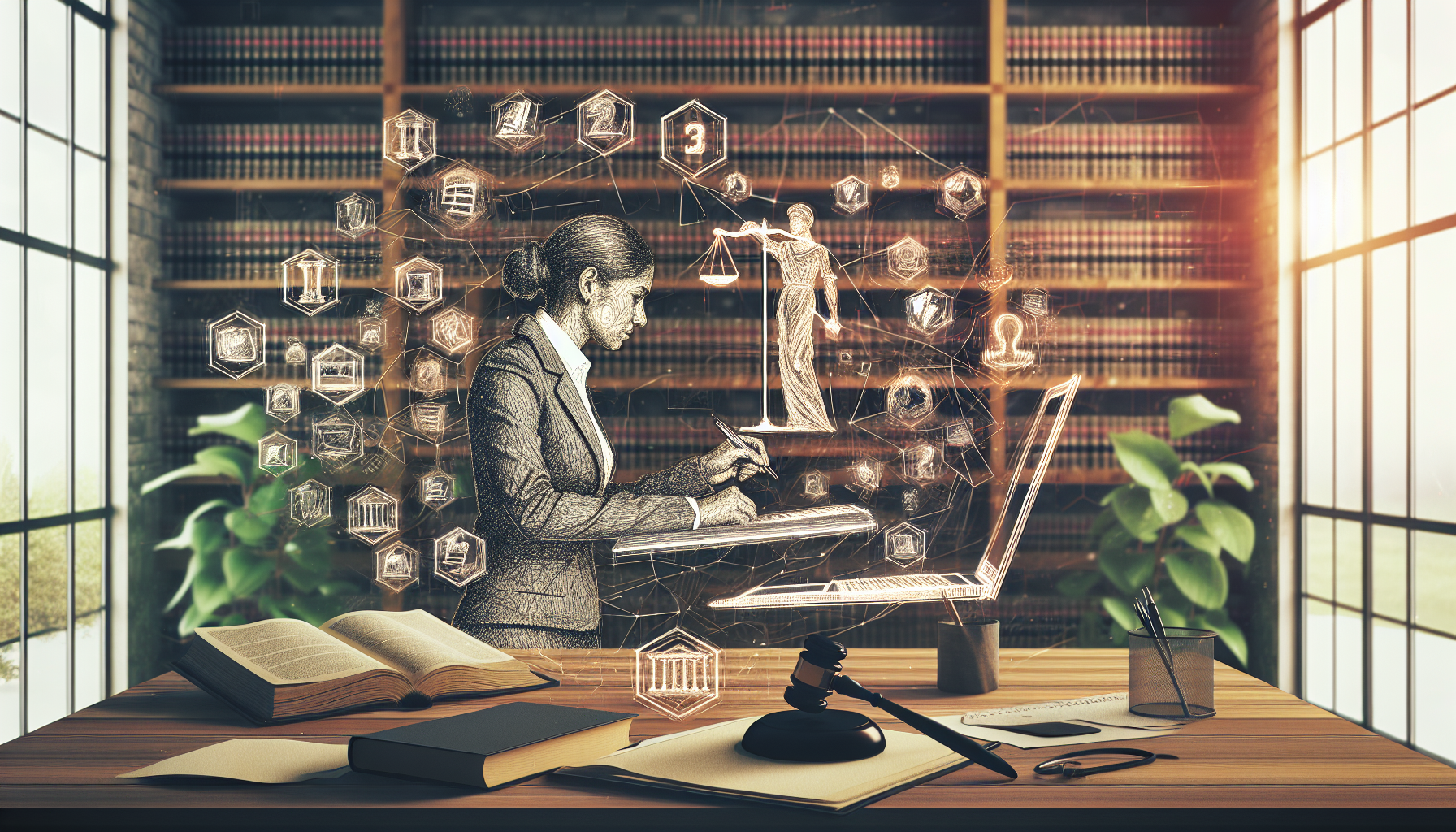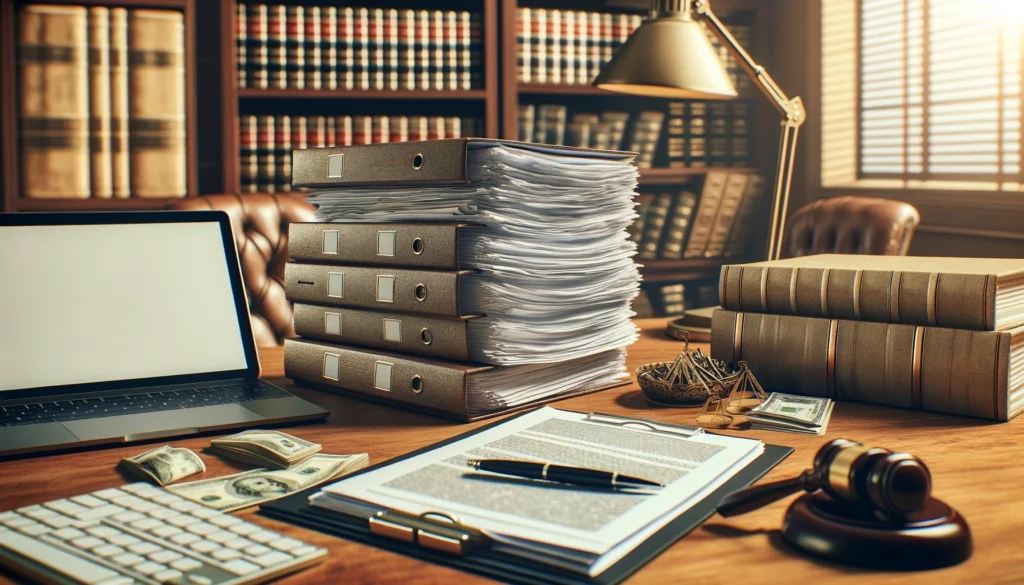
Opening Remarks: Harnessing the Power of AI in Personal Injury Law
Artificial Intelligence (AI) continues to evolve, impacting a myriad of industries, including the legal sector. But how does AI integrate specifically into the realm of personal injury law? AI technologies, like ChatGPT developed by OpenAI, have become invaluable tools in aiding legal professionals to expedite their workflow. These AI-driven platforms provide powerful assistance to everything from basic research to drafting legal documents.
ChatGPT, in particular, stands out as a revolutionary tool in the legal profession. It offers enhanced capabilities in automating tasks that are often time-consuming. In this guide, we’ll explore how ChatGPT can be leveraged to draft precise legal descriptions, thereby revolutionizing the work of paralegals in personal injury law.
The Paralegal’s Ally: How ChatGPT Revolutionizes Legal Drafting
For paralegals tasked with drafting intricate legal documents, accuracy is non-negotiable. Here is where ChatGPT steps in to support.
ChatGPT utilizes advanced natural language processing to understand and generate human-like text based on the input it receives. When tasked with drafting legal descriptions, ChatGPT can produce precise documents with a remarkable level of clarity. This can include client statements, legal arguments, or even complex accident descriptions crucial in personal injury cases.
- Efficiency: With AI, paralegals can draft more documents in less time.
- Accuracy: AI helps minimize human errors by providing consistent and precise drafting, reducing the likelihood of inaccuracies.
By incorporating AI tools like ChatGPT, paralegals can shift their focus from repetitive tasks to more strategic responsibilities within their roles.
Also read:
Mastering AI Communication: Crafting Effective Prompts
One crucial aspect of working seamlessly with ChatGPT is crafting effective prompts. The quality of the AI’s output directly depends on the input it receives. Understanding and refining prompts is crucial for producing accurate legal drafts.
To illustrate:
- Basic Prompt: “Describe a car accident involving two vehicles.”
- Advanced Prompt: “Draft a legal description of a car accident where a sedan, driven by Jane Doe, collided with an SUV at the intersection of Main Street and 5th Avenue due to poor visibility and icy road conditions. Include details such as time, weather conditions, and any witness statements.”
The difference in these prompts is the level of detail, which results in significantly more relevant and contextually appropriate responses from ChatGPT. Refining prompts entails specifying the necessary legal elements and context, which enhances the AI’s ability to generate useful outputs.
Lawyers and paralegals should develop techniques such as breaking down complex requests into smaller, manageable parts and iterating on prompt construction to fine-tune the responses. This ensures a robust interaction with AI, making legal drafting more efficient and targeted.
Also read:
Step-by-Step Guide: Drafting Legal Descriptions Using ChatGPT
To maximize the utility of ChatGPT in drafting legal descriptions, a structured approach is essential. Here’s a step-by-step guide:
Starting the Draft:
- Open the ChatGPT interface and ensure you have a thorough understanding of the case details at hand.
- Construct an initial prompt that includes foundational elements such as parties involved, type of incident, and location.
Essential Elements Checklist:
- Names and roles of parties involved
- Date and time of the incident
- Location specifics
- Environmental conditions (weather, visibility, etc.)
- Description of events leading to the incident
- Witness statements and evidence
- Legal implications and potential claims
Iterate and Refine:
- Generate the initial draft using the constructed prompt.
- Review the output for accuracy and comprehensiveness.
- Revise the prompt to elaborate on missing or unclear aspects.
- Generate a second draft and compare it to ensure improvements.
- Continue iterations until the legal description is thorough and precise.
This methodical approach helps in achieving a well-rounded and legally robust document, suitable for personal injury cases.
Also read:
Advanced Techniques: Beyond the Basics
Going beyond basic drafting, ChatGPT has capabilities to handle more complex tasks and detailed scenarios. For instance, it can:
- Cross-reference legal precedents or relevant case laws
- Incorporate nuanced interpretations of legal principles
- Generate detailed narratives that include multiple witness statements and contradictory evidence
The key is to continually push the boundaries of what ChatGPT can accomplish by experimenting with various input methods and expanding the scope of prompts.
Also read:
Incorporating Legal Terminology and Nuances
One challenge in using AI for legal drafting is ensuring the correct application of legal terminology and jargon. Here are some techniques:
- Specific Prompting: Include explicit instructions for using legal terms relevant to the case.
- Template Prompts: Develop a set of pre-defined templates imbued with standard legal phrases and terminologies.
- Feedback Loop: Continuously provide feedback to refine the AI’s grasp of legal nuances.
By consciously integrating these elements, ChatGPT maintains the necessary legal precision and relevance in its outputs.
Also read:
Ethical Considerations and Best Practices
While leveraging AI tools, it’s imperative to adhere to ethical guidelines and best practices. Key considerations include:
- Confidentiality: Ensure that client information is anonymized and data is handled securely.
- Compliance: Ensure the use of AI complies with statutory regulations and professional standards.
- Transparency: Maintain transparency with clients about the use of AI in preparing legal documents.
Adopting these practices upholds the integrity of the legal profession while embracing AI-powered enhancements.
Also read:
Future Prospects: AI Innovations in Legal Practice
The proliferation of AI in legal practice is just beginning. Emerging technologies like machine learning, predictive analytics, and blockchain integration promise further transformation.
Legal professionals should remain adaptable, continually learning about new AI tools and methodologies, to stay ahead in an evolving landscape.
Also read:
Closing Thoughts: Embracing AI for a More Efficient Future
Integrating AI into legal workflows fosters efficiency and precision, allowing legal professionals to focus on more strategic tasks. It’s time for the legal community to fully embrace these emerging technologies, ensuring a more efficient and innovative future in legal practice.


